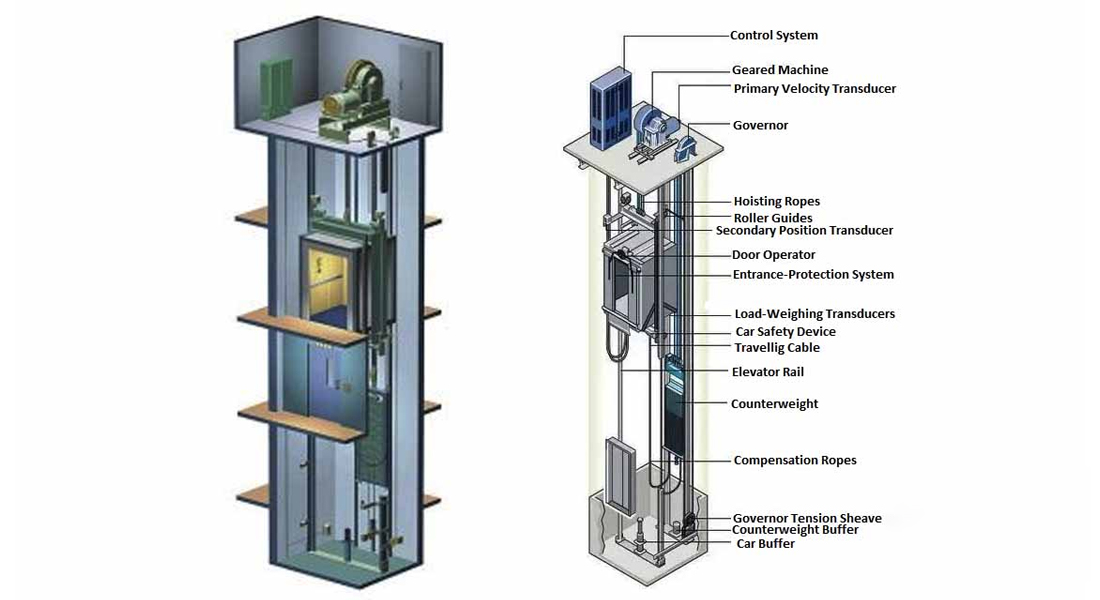The choice between a geared and a gearless elevator is an important one that can impact the efficiency of a building's transportation system. Both types of elevators have their advantages and disadvantages, and choosing the right one for a building depends on various factors.
Pain Points of Geared vs Gearless Elevator
Building managers and owners often face the challenge of selecting the right elevator system to meet their needs. The choice between a geared and a gearless elevator is not straightforward, as both systems have their benefits and disadvantages.
Target of Geared vs Gearless Elevator
The target of geared vs gearless elevator is to understand the differences between the two elevator systems, the advantages and disadvantages of each type, and how they impact building design and energy efficiency.
Main Points of Geared vs Gearless Elevator
Geared elevators are traditional elevator systems that use a gearbox to power the elevator. These elevators are usually less expensive to install and maintain, but they are typically slower and less efficient than gearless elevators. Gearless elevators, on the other hand, use a permanent magnet motor to power the elevator, which makes them faster and more energy-efficient than geared elevators. However, gearless elevators are generally more expensive to install and maintain than geared elevators.
Personal Experience with Geared vs Gearless Elevator
During my time working as a building manager, I had to select the right elevator system for a new high-rise building. After considering various factors such as building design, energy efficiency, speed, and cost, we decided to go with a gearless elevator system. Although it was more expensive to install and maintain, it provided the fast, efficient transportation system that the building needed, and it helped us save on energy costs in the long run.
Advantages and Disadvantages of Geared vs Gearless Elevator
Geared elevators are more cost-effective to install and maintain, and they are suitable for low-rise buildings with fewer floors. However, they are slower and less efficient than gearless elevators, making them less suitable for high-rise buildings with many floors. Gearless elevators are faster, more energy-efficient, and better suited for high-rise buildings with a high flow of traffic. However, they are more expensive to install and maintain than geared elevators.
Energy Efficiency of Geared vs Gearless Elevator
Gearless elevators are more energy-efficient than geared elevators. Because they use a permanent magnet motor to power the elevator, they consume less energy and require less maintenance than geared elevators. This energy efficiency translates into lower energy costs for building owners and managers over time.
Noise Level of Geared vs Gearless Elevator
Geared elevators are typically noisier than gearless elevators due to the presence of a gearbox. This noise level can be a concern in buildings with strict noise regulations or sensitive occupants such as hospitals and residential buildings. Gearless elevators, on the other hand, are silent due to the absence of gearboxes, making them a good choice for buildings that require a quiet transportation system.
Question and Answer
Q: Which type of elevator is more energy-efficient?
A: Gearless elevators are more energy-efficient than geared elevators due to their use of permanent magnet motors, which consume less energy.
Q: Which type of elevator is faster?
A: Gearless elevators are generally faster than geared elevators due to the absence of a gearbox, which can slow down the elevator's speed.
Q: Which type of elevator is more expensive to install?
A: Gearless elevators are more expensive to install than geared elevators due to the use of permanent magnet motors, which are more costly than gearboxes.
Q: Which type of elevator is quieter?
A: Gearless elevators are quieter than geared elevators due to the absence of a gearbox, which can produce noise.
Conclusion of Geared vs Gearless Elevator
Choosing between a geared and a gearless elevator system depends on various factors such as building design, energy efficiency, speed, and cost. Both systems have their advantages and disadvantages, and building managers and owners need to carefully consider these factors to select the right system for their building. Ultimately, the choice between geared and gearless elevators should be based on the specific needs of the building in question.
Gallery
Geared Vs Gearless Traction Elevator; Which One To Choose! - ISF

Photo Credit by: bing.com / geared elevator gearless traction elevators hidrolik counterweight
Chicago Elevator Maintenance - Colley Elevator: Modernization Of An

Photo Credit by: bing.com / traction elevator elevators machine gearless geared motor mitsubishi type modernization sheave electric speed method gif hydraulic without maintenance
Discussed Comparisons About Geared & Gearless Elevator Machine By Milan

Photo Credit by: bing.com /
Geared Vs Gearless Traction Elevator; Which One To Choose! - ISF

Photo Credit by: bing.com / geared gearless elevator traction elevators
Difference Guide | Geared Elevators And Gearless Traction Elevators

Photo Credit by: bing.com /